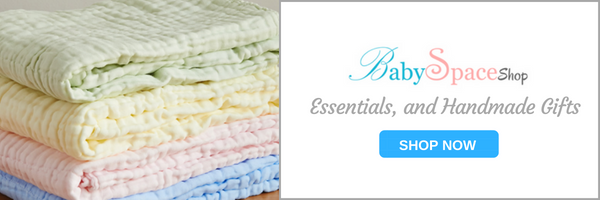A baby will need at least ten nappy changes during the day. This process will seem confusing at first but with time, you will get the hang of it. With this guide, BabySpace will help you understand all about nappy changing.
What are disposable and cloth nappies?
These are two different types of nappies. A disposable can absorb moisture well and they can sustain wetness longer while cloth nappies are simple and inexpensive.
Most moms prefer cloth nappies because they claim that they cause less nappy rashes, eco-friendly and convenient to use. In addition, a cloth nappy is easy to handle with and it will be very comfortable for your baby as they are very soft.
How do I know my baby needs a nappy change?
Well, to start with most babies do not find wetness a nuisance. This means that your baby will not cry or show discomfort when she’s ready for a change. Therefore, you will have to check if your baby has wet herself every couple of hours.
This is not so in most babies. They will cry until you change them into dry nappies because wetness will be very uncomfortable.
Also at night if your baby urinates or soils herself it is not necessary to change the nappy as its best not to disturb her sleep. If you get a strong smell then you will have to change her nappy.
It is always handy to keep a clean stack of nappies nearby during the night.
Why is it important for me to change my baby’s nappy regularly?
Nappy changing is very important because failing to so may result in negative health conditions. This is as bacteria in your baby’s urine and faeces can develop rashes, skin sores, or fungal infections (since human waste can change into ammonia if left for too long). So be prepared to change those stinky nappies regularly because your baby will poop several times a day and urinate at least every three hours.
What is a nappy rash?
A nappy rash is a skin irritation that will develop when a nappy is left for a long time. This is caused by a fungal infection that develops due to the dampness of your baby’s soiled nappy.
This is normal but you will have to consult your doctor if a nappy rash gets worse. A simple nappy rash can also end up in a nasty bacterial infection if your baby’s skin is weakened or if there is a small wound on your baby’s skin; which is most likely because her skin is mild and fragile at this age vulnerable for many different infections. This will cause much discomfort to your baby.
What should I do if my baby develops a nappy rash?
Firstly, you have to remember that nappy rashes are common. Babies can experience it occasionally and the best way to overcome a sticky nappy rash is to let in air every so often. Let your baby stay without a nappy on several times a day.
Changing the nappy whenever your baby wets or dirty herself will also help but make sure you dry the baby’s bottom before putting a clean nappy on. In addition, a zinc cream at the local pharmacy will be of aid. Apply it before putting a clean nappy on and your child will feel more comfortable.
Some facts to remember about nappy rashes are that a normal nappy rash is red like a dark pink and the baby will not feel bad but will show discomfort when they wet or dirty herself. This condition will improve when necessary precautions are taken.
If the rash turns bright red then it is a fungal infection. Red spots on the buttocks and redness in the folds of your baby’s skin. This will turn into a bacterial infection causing her skin to swell which will irritate your baby and develop a fever.
It is always healthy to consult your doctor if your baby’s skin turns dark red.



